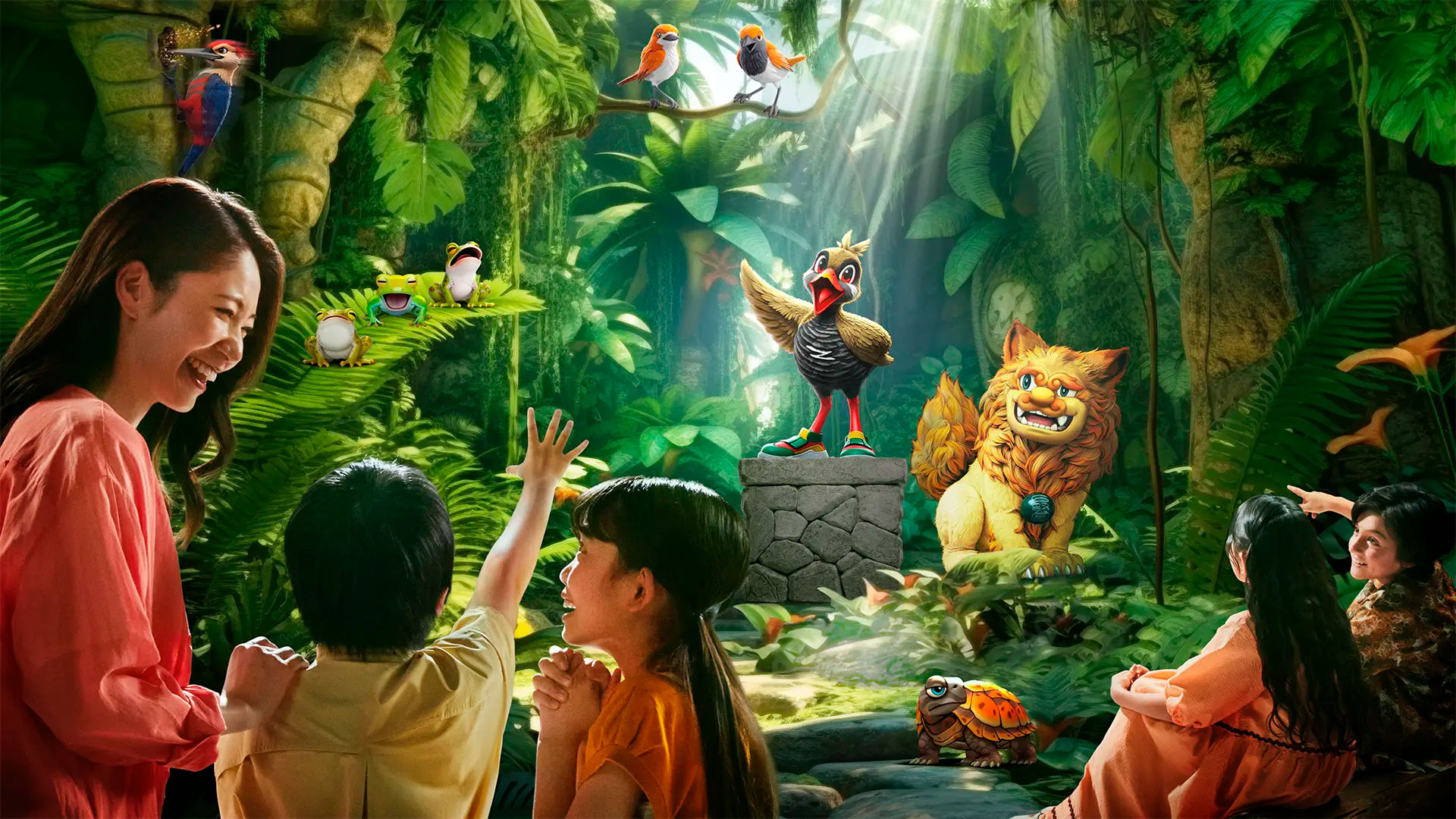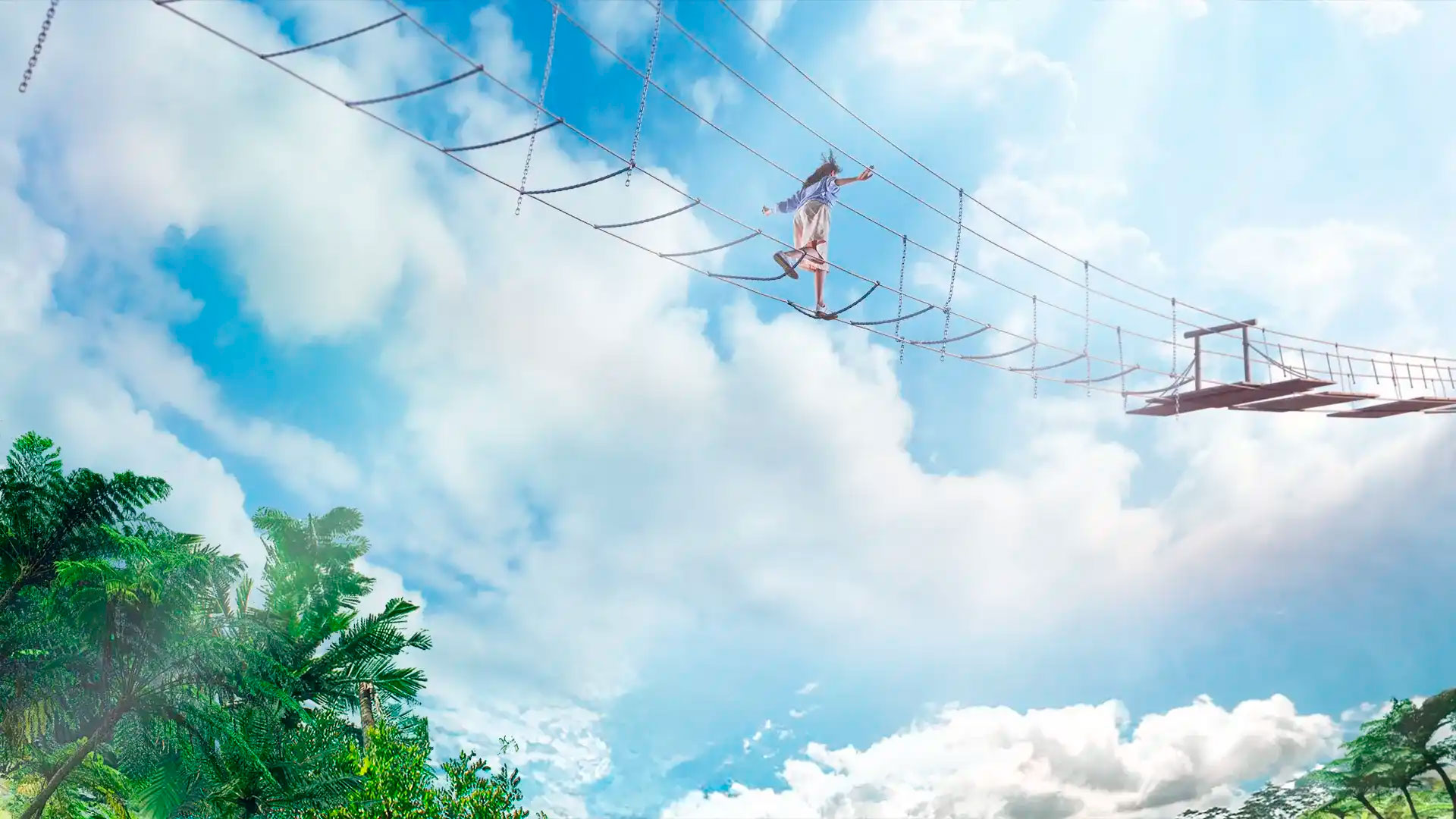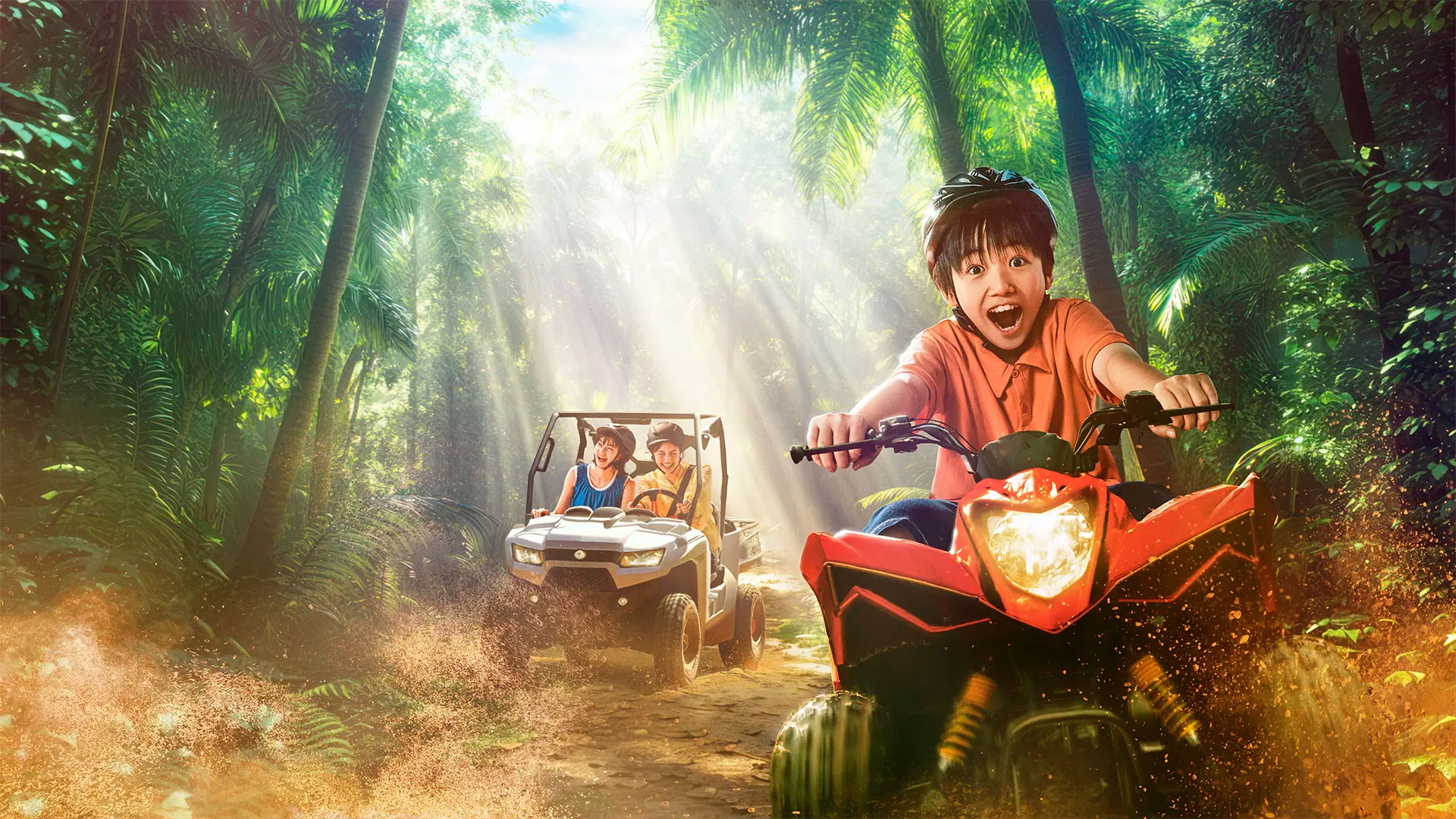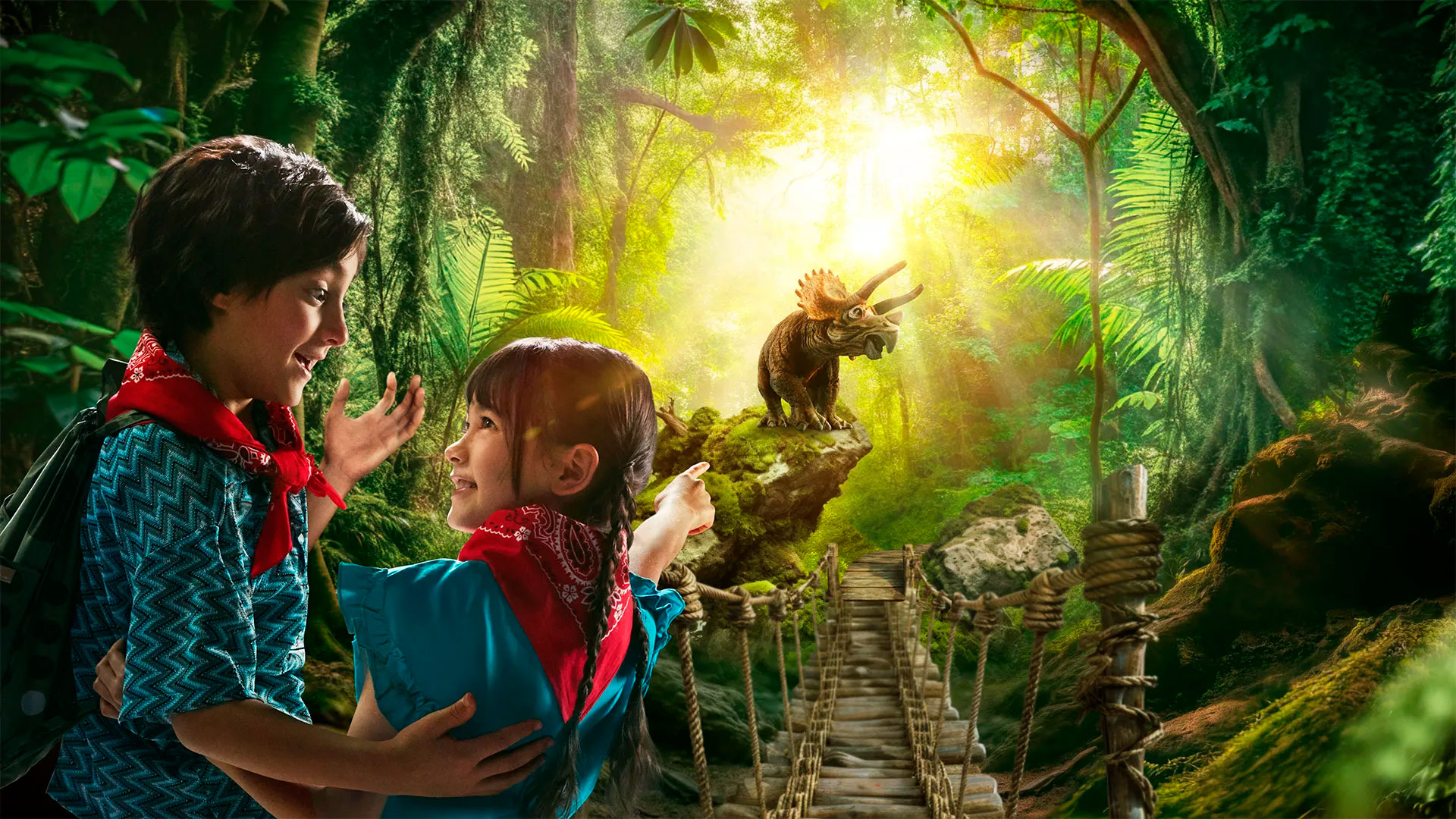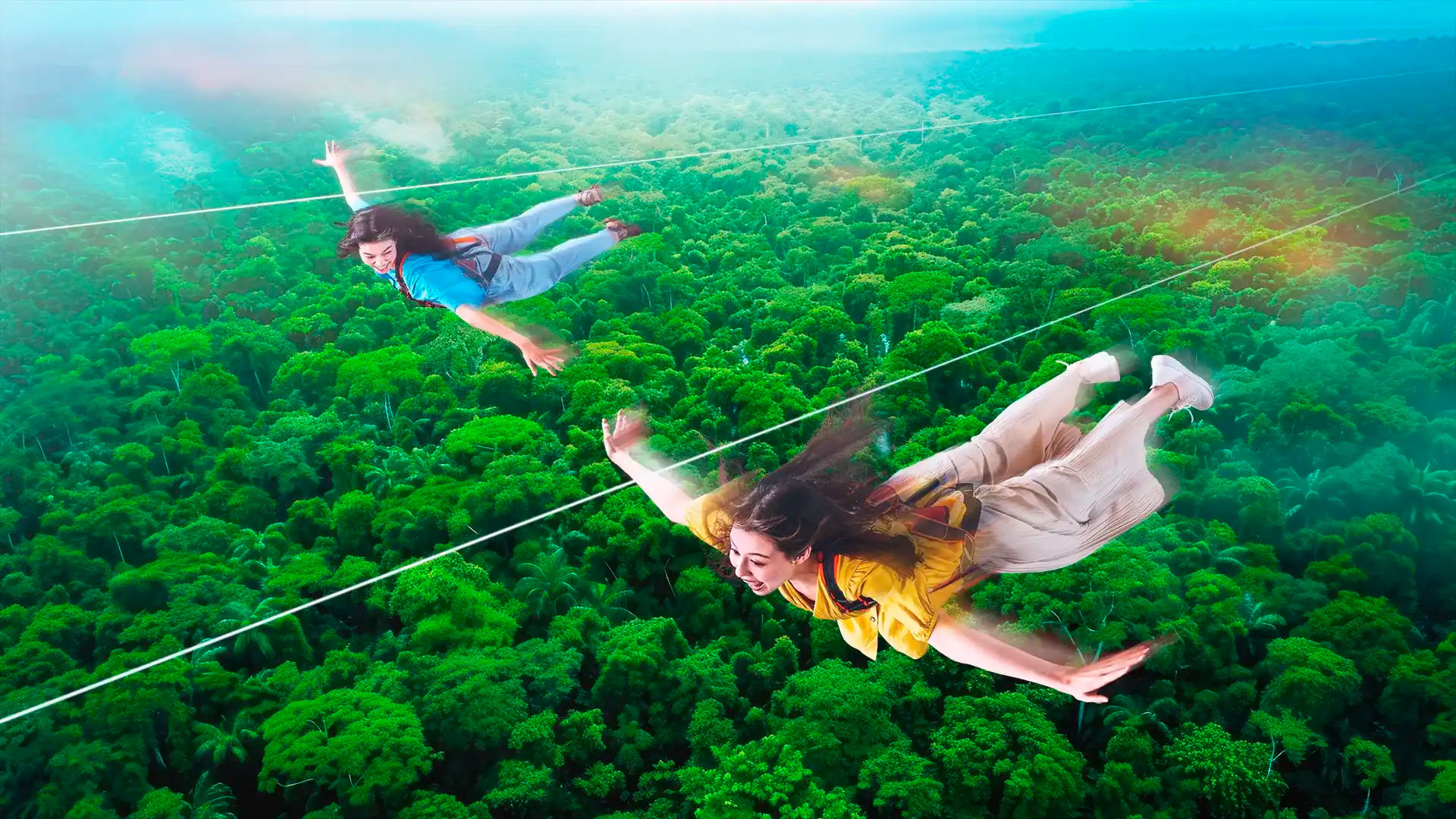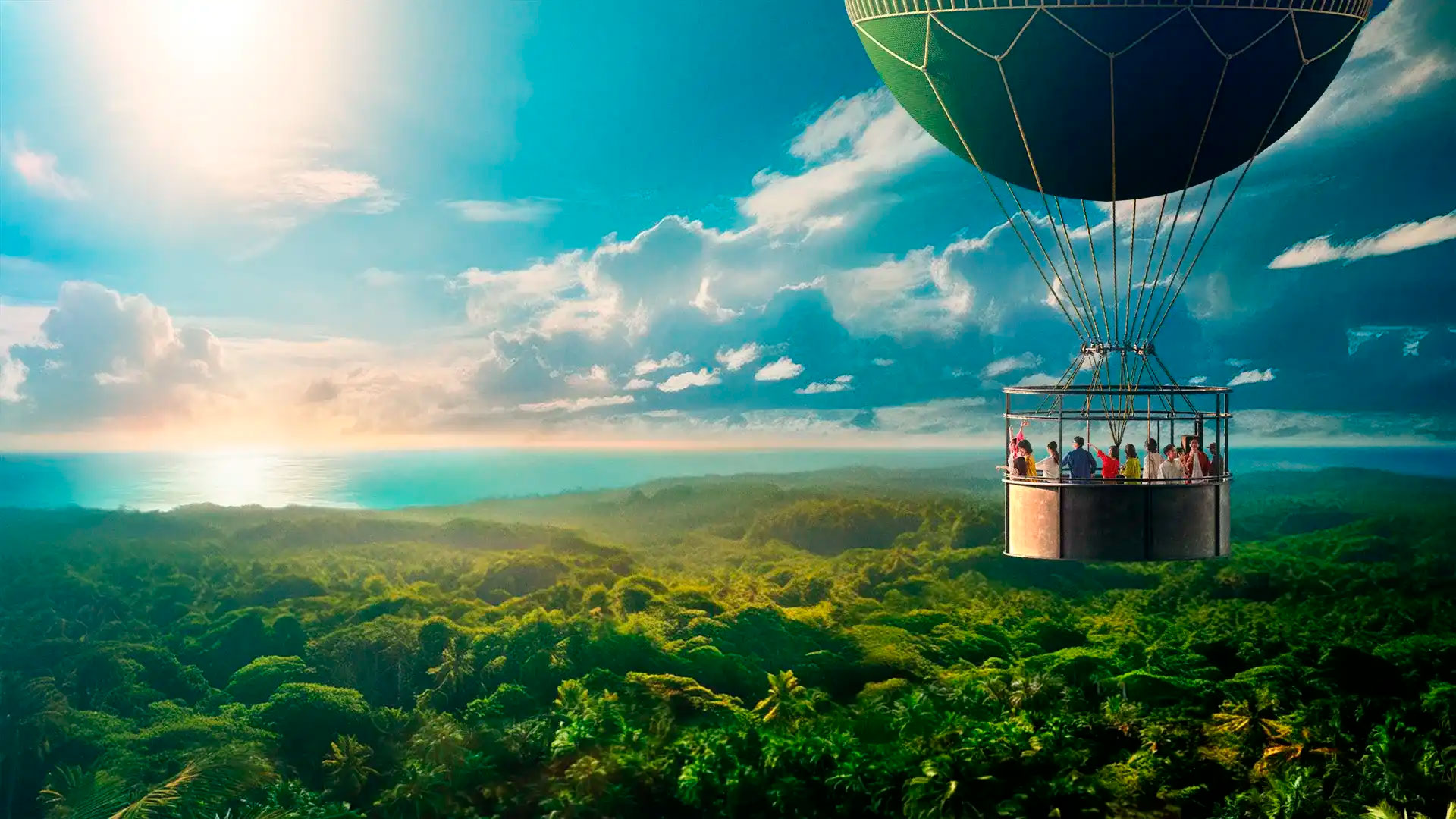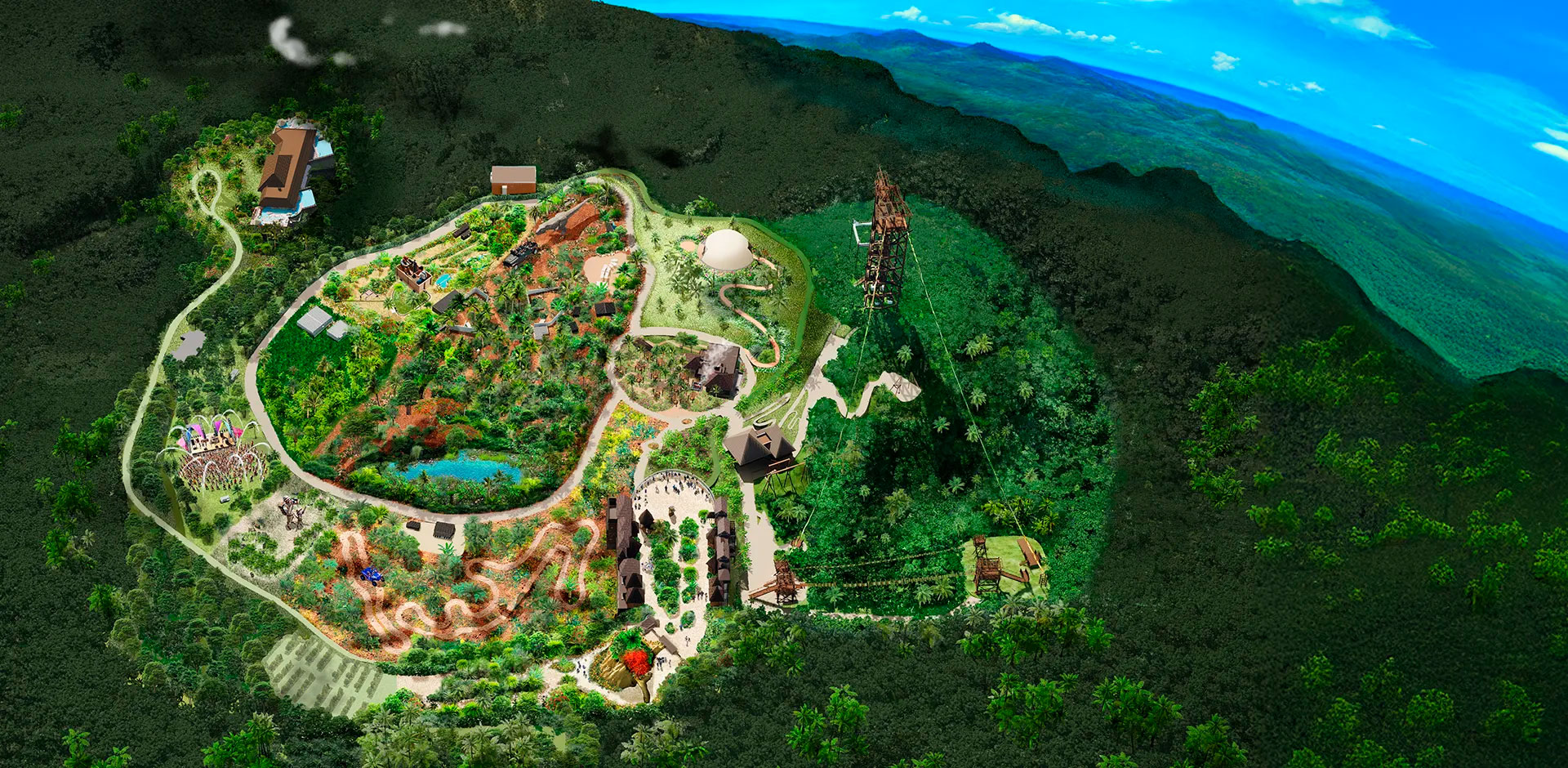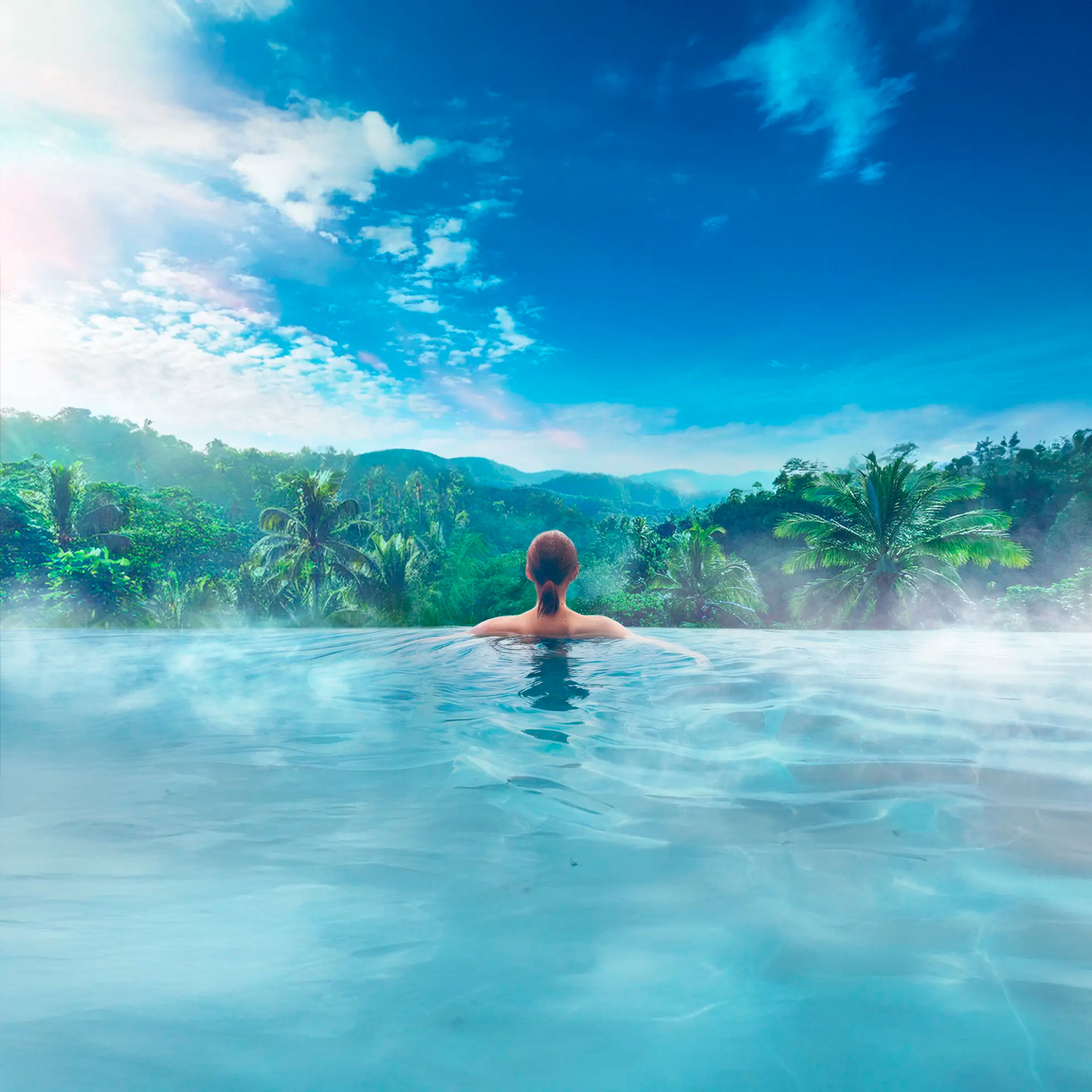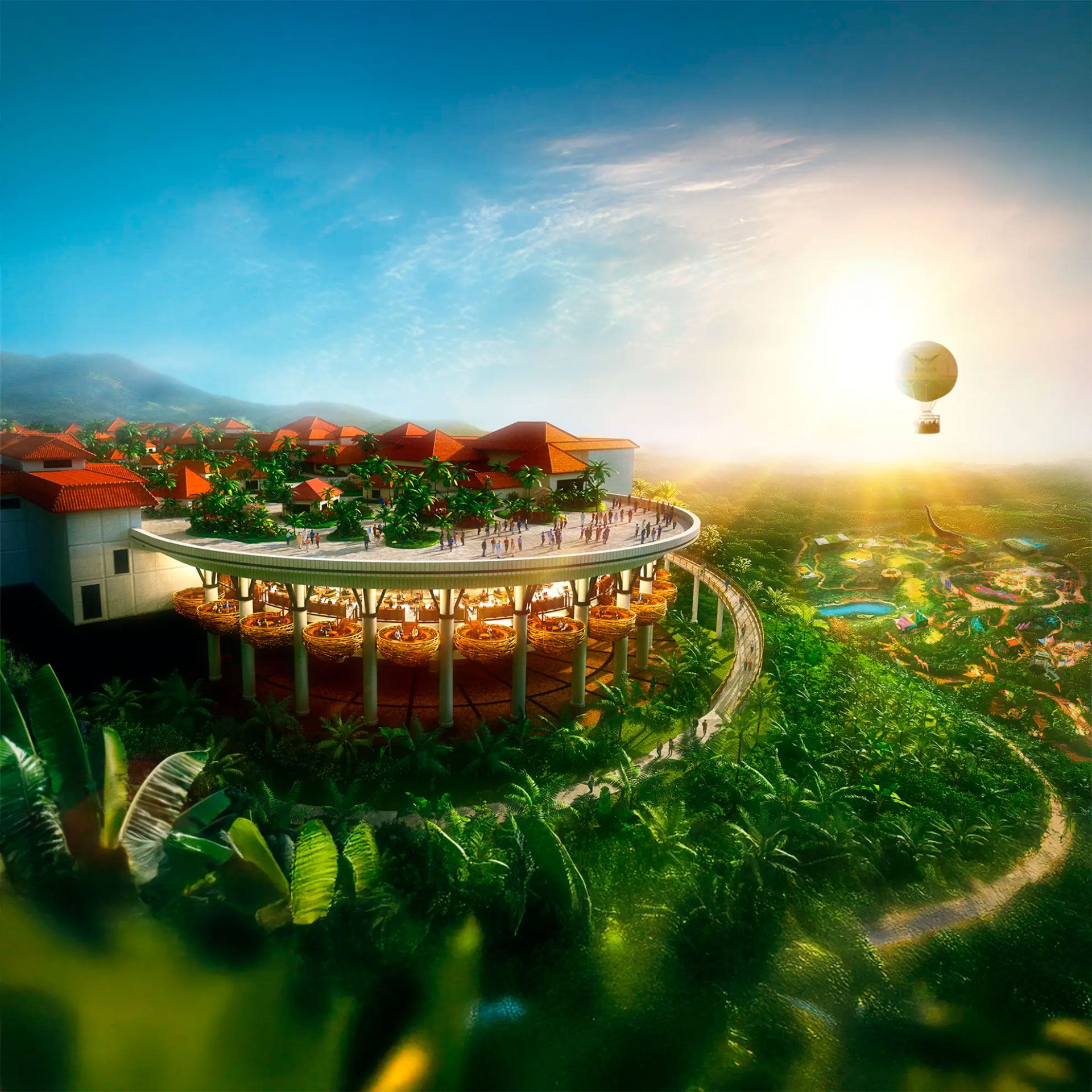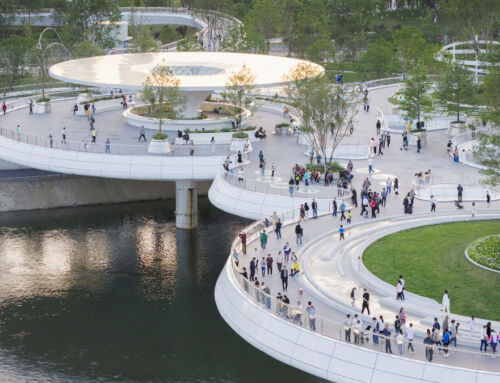Imagine entering a subtropical jungle where life-size dinosaurs roar as you pass by, where hot air balloons carry you 200 metres above the lush vegetation, or where local characters invite you to discover the secrets of an ancient forest. That is precisely—in part—the experience promised by Junglia Okinawa, the ambitious new theme park opening this July (2025) in the heart of the Yambaru jungle, in the north of Okinawa Island, Japan.
A project reborn from a golf course
Junglia is located in a forested area that UNESCO declared a World Natural Heritage Site—along with Iriomote Island in the same prefecture and Amami Ōshima and Tokunoshima Islands in Kagoshima—in July 2021. The new 60-hectare theme park is the result—a positive result—of the transformation of a former golf course. During its construction and development, Junglia increased the number of native trees on what were once expanses of grass, therefore integrating Okinawa’s natural landscape into a sanctuary of adventure and conservation.
Behind the development of the new theme park is Tsuyoshi Morioka, a renowned theme park marketing expert whose work as Marketing Director of Universal Studios Japan helped make it one of the most visited entertainment complexes in the world. As CEO of the advertising and development firm Katana Marketing, he is credited with the innovative vision of Junglia Okinawa, in collaboration with a multidisciplinary team of engineers, landscape architects, and immersive experience specialists.
Adventures among Dinosaurs
Visitors to Junglia starting this month will find more than 20 attractions, restaurants, shops, and a spa with infinity pools that promise absolute relaxation. Among its star experiences is the Dinosaur Safari, a jeep tour among animatronic dinosaurs that includes an imposing 19-meter brachiosaurus. For adrenaline-pumping lovers, the Sky Phoenix offers the sensation of flying, while the Gravity Drop makes your heart race.
Those who prefer a more serene experience can take a ride on the Horizon Balloon, a hot air balloon that ascends over the jungle and includes a glass of champagne to enjoy the views. And to recharge batteries, the Junglia Spa offers open-air saunas and hot spring baths nestled among rocks, all accompanied by the sounds of nature.
Yanbaru Friends: Education and Family Fun
One of Junglia’s new features is the Yanbaru Friends experience, an interactive theatrical attraction where visitors meet Jan, a red-footed Yanbaru Kuina bird— a bird indigenous to northern Okinawa and incidentally endangered —and Shishi, a guardian inspired by the Shisha, mythological Japanese dog-lions. Through games and questions, young and old learn about local biodiversity, including species such as the Ryukyu black-breasted turtle and the Okinawan woodpecker.
Dining with a view to infinity
At Panorama Dining, diners will enjoy a unique experience at tables arranged in “bird’s nests“, open-air capsules overlooking the jungle canopy. Meanwhile, the Infinity Terrace serves as a privileged viewing point from which, with a bit of luck, they might even spot a dinosaur among the trees. As night falls, the park transforms with acrobatic shows, live music, and fireworks.
A boost for tourism in northern Okinawa
Unlike the south and centre of the island, where traditional tourism is concentrated, northern Okinawa has lagged somewhat behind in terms of tourism development. Junglia seeks to redistribute visitors, becoming a tourist attraction, therefore producing an economic impact on the region. With affordable admissions for residents and international tourists and an investment of 70 billion yen (about €414 million at current exchange rates), the park not only represents an unprecedented adventure, but also a strategic commitment to the future of Okinawa.
And all this in a context in which, according to Reuters, Japan is experiencing an unprecedented tourism boom, partly due to the weak yen. Last year (2024), the country reached a record 36.9 million international visitors, an increase of just over 47% compared to the previous year. Furthermore, visitor spending increased by 53%, reaching approximately €48 billion. These figures make tourism in Japan—which accounts for 20% of its GDP as an export—its second-largest export, behind only the automobile sector.
Sources: Junglia, Metropolis Japan, Reuters.
Images: Junglia.



